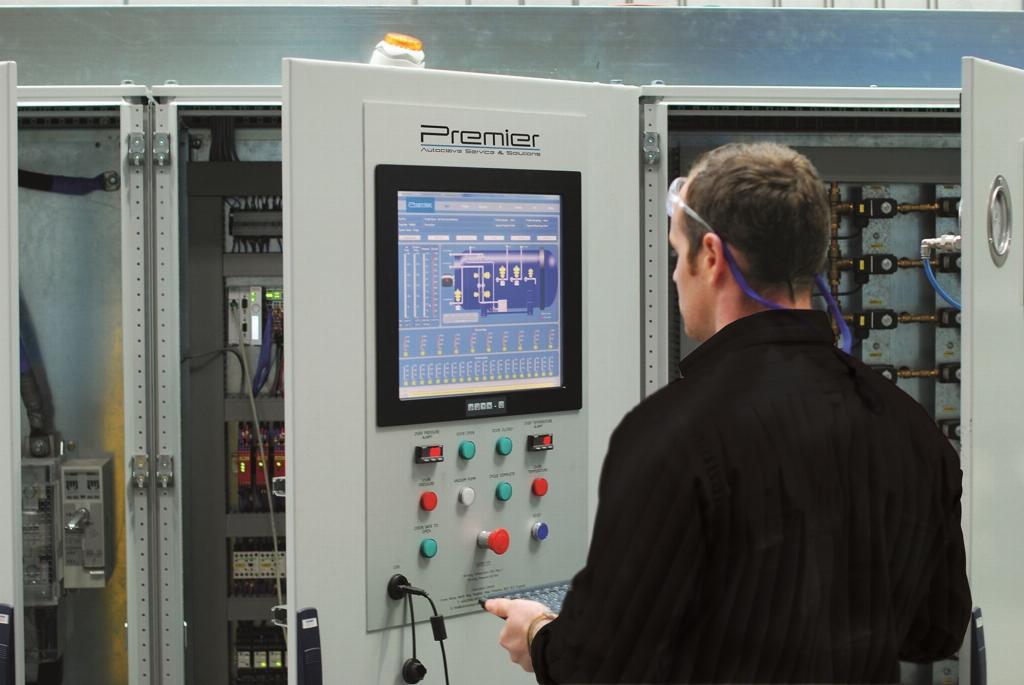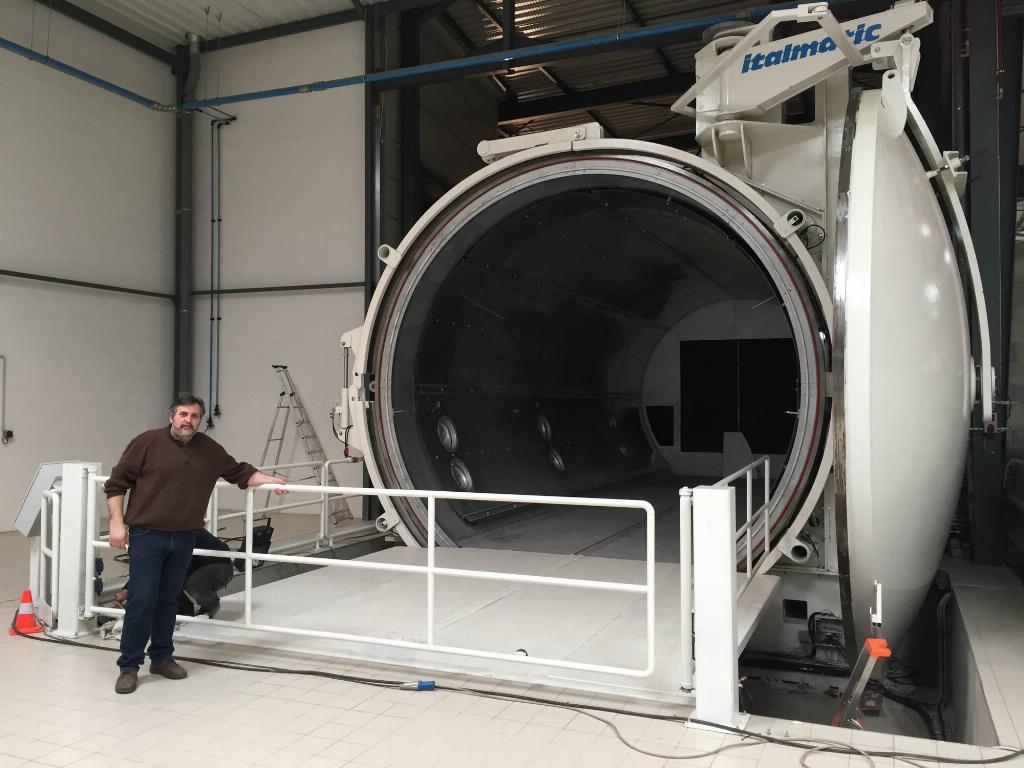Pressing ahead with the oven

The autoclave is a common piece of equipment used in composite manufacturing, ensuring consistent quality can be maintained while curing processes take place. Ed Hill speaks two leading companies in the field about the latest developments.
In recent years autoclaves have become much more than just big industrial ovens. The introduction of sophisticated controls and hardware means heat and pressure can be applied to exacting levels and parts continually monitored to meet industry standards and provide traceability.
Premier Autoclaves, based in Keighley, Yorkshire, maintains, services and upgrades all makes of autoclave for customers in the UK. Scott Dyson, sales manager from the company explains how autoclaves are used for the production of composite parts.
“Autoclaves are in effect 3D presses with sophisticated controls and hardware allowing for exact application of heat and pressure. In simple terms, during a cycle, and after vacuum bagging, the pressure compresses and compacts parts, removing air between layers of prepreg whilst increased temperature works to crosslink and cure fibres. Operating parameters are dependent on selected resin systems. Complete traceability – in more advanced systems – throughout this process combined with consistency of production have kept autoclaves at the forefront of production for high quality parts.”
Italian manufacturer, Italmatic has a long history or producing autoclaves. Since the 1980s it has supplied customers working in sectors such as aerospace, marine and automotive. Sales manager Oscar Cacciamatta explains how the controls on its autoclaves have evolved over the years to provide a much more consistent curing process.
“Originally, single loop regulators managed pressure, temperature and vacuum,” he comments. “Today to manage the autoclave process the latest technologies help us provide single or hot redundancy with Programmable Logic Controllers (PLCs) for cycle management and to monitor in data processes; or a Distributed Control System (DCS).
“At Italmatic we provide the Italmatic Control System (ICS). This is the result of the experience and research that our electronic and software engineers have shared with all the users of our machines for production cycles.
“Italmatic SCADA (supervisory control and data acquisition) which is developed by us in-house satisfies the most restrictive certifications requested by major manufacturers in the aerospace industry.”

“At Premier, we work on all brands of autoclave. Automation has been the most obvious and widespread improvement; minimising the need for operator interaction after cure selection and pressing the ‘go’ button. Thermal head curing has been a great addition to control; increasing efficiency and accuracy of cure by allowing air temperature to increase beyond part temperature on ramp, ensuring the part follows the set point accurately.
“Beyond this, the possibilities with data processing, monitoring, automated reports and so on are endless. We regularly write bespoke code for our customers to enable cost-saving measures, because of the flexibility of our Premier software.”
Heat and pressure
Composite cure cycles in autoclaves often involve two stages. Firstly, vacuum and pressure are applied while temperature is increased to a midway level to reduce resin viscosity allowing it to saturate or ‘wet’ all areas of the part. Then temperature is raised again to complete to the final cure reaction.
The autoclave is sometimes viewed as a cause of bottlenecks within the production process, but experts in the technology are working hard to find ways to reduce cure times and increase throughput.
Dyson says: “Production increases go hand-in-hand with autoclave efficiency improvements. Whilst cycle times and parameters are dictated by the parts being cured and their resin systems, Premier work with customers to help them better understand airflow and autoclave thermal-dynamics through comprehensive traceability. To give a few benefits of updating old systems (and more pertinently manually run systems); cures are more intuitive, follow set point better, use thermal head to reach ramp-end quicker and are generally more cost-effective with drastically reduced operator involvement.
“One recent upgrade resulted in a customer going from being able to cure once or twice per day with a manual autoclave system to undertaking four cures every day.”
Italmatic says it works with many research institutes to reduce processing time. Cacciamatta adds: “It is possible to increase production and reduce cure time by designing machines with high heating/cooling performance, but that also keep control of the materials undergoing treatment. Italmatic’s R&D activities are focused to achieve these targets in collaboration with different institutes (university and other R&D departments etc.) and with raw material suppliers.”
Autoclaves come in many different sizes from those used in small scale R&D production, to very large machines capable of curing aerospace parts such as wings, nacelles or fuselages.
Adding upgrades
Their basic design, consisting a circular pressure vessel made from heavy metal sections, means the machines lend themselves to being upgraded with the addition of new controls, software and seals etc. This is where Premier’s expertise is applied.
“All upgrades take place onsite without the need for removal of vessel,” Dyson explains. “This minimises on-site disruption. Any autoclave can be upgraded. Premier have helped improve all manner of machines, from homemade autoclaves manufactured decades ago to top specification 2014 continental machines.
“From the outset, these overhauls are driven by our customer’s needs. We evaluate how best to maximise an autoclave’s potential in terms of efficiency, safety and performance and use our expertise to offer bespoke proposals.”
The development of thermoplastic resins means that more and more out-of-autoclave process are being introduced in the composite industry, particularly for high volume applications, but both Dyson and Cacciamatta believe there will always be a need for them in the composites industry.
“For industries whose core manufacturing is the fabrication of structures based on moulds, stringers and reinforcements such as aerospace, the autoclave remains the most suitable technology to achieve the highest performance,” says Cacciamatta.

“Also autoclave curing is a batch process suitable for parts with varied contours and complex shapes. These can consist of completely different sizes or recipes or require completely different temperatures, pressures and vacuum levels from one cycle to the next. This is only possible with the flexibility of the autoclave.”
So how do Premier and Italmatic view the future for the autoclave?
“Automation is always evolving and cycle monitoring being improved day-by day,” Cacciamatta says. “Italmatic has a standard software package, but with the benefit of customisation to meet end-user necessities. Customisation is increasingly becoming a standard offer for the market.”
Dyson concludes: “Control systems such as Premier’s CureManager enable a great level of automation and our regular iterations ensure continual improvements for the market. An example of a recent development in automation is Premier’s Green/Red flag reporting. This system, where the controls automatically check if a cure is within pre-defined tolerances at the end of cycle, saves huge amounts of manual checking time. Another interesting Premier advance is an autoclave energy recovery system patented and in development.”









